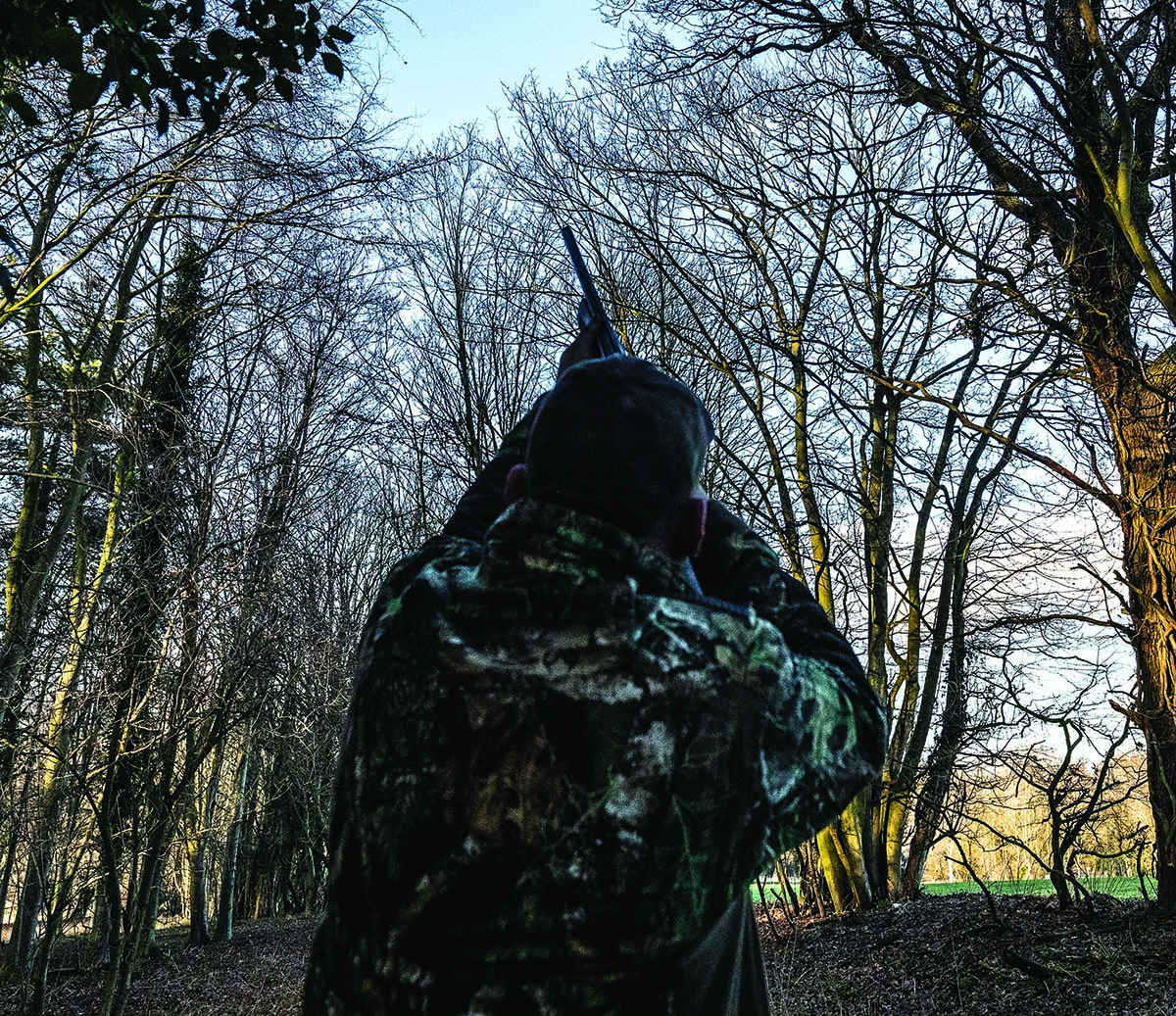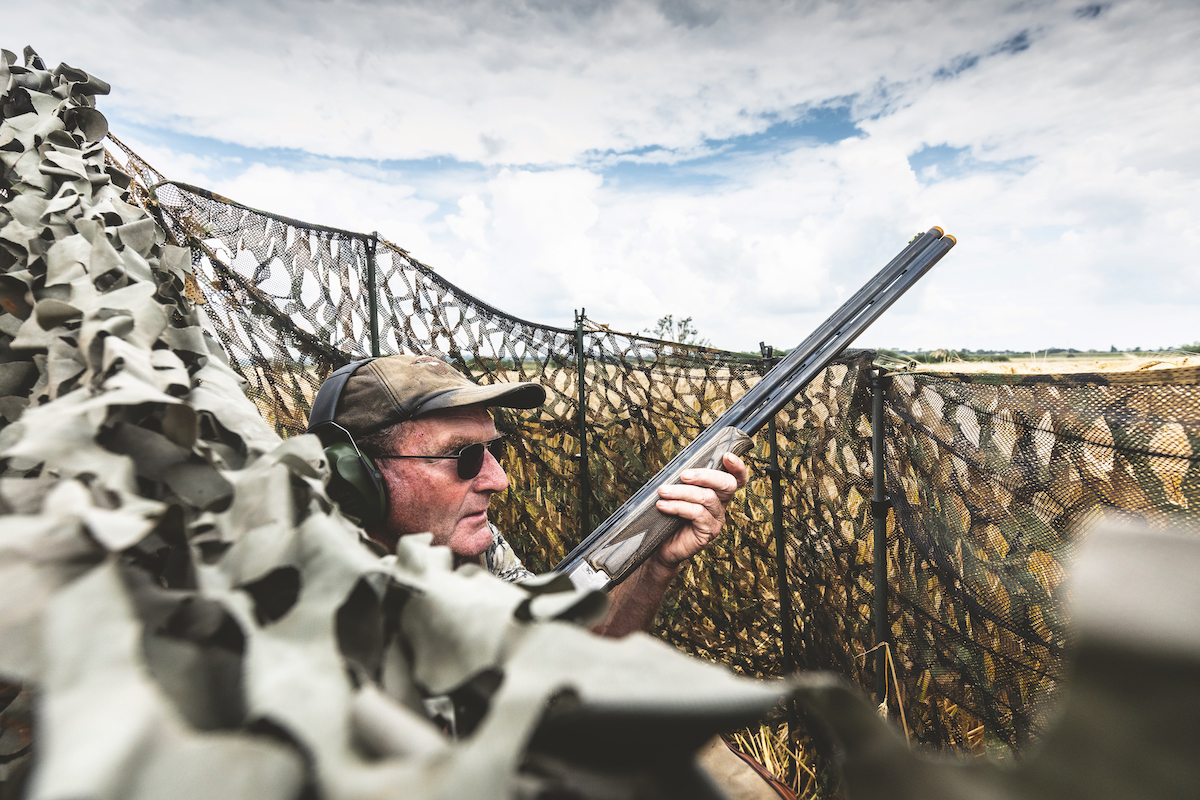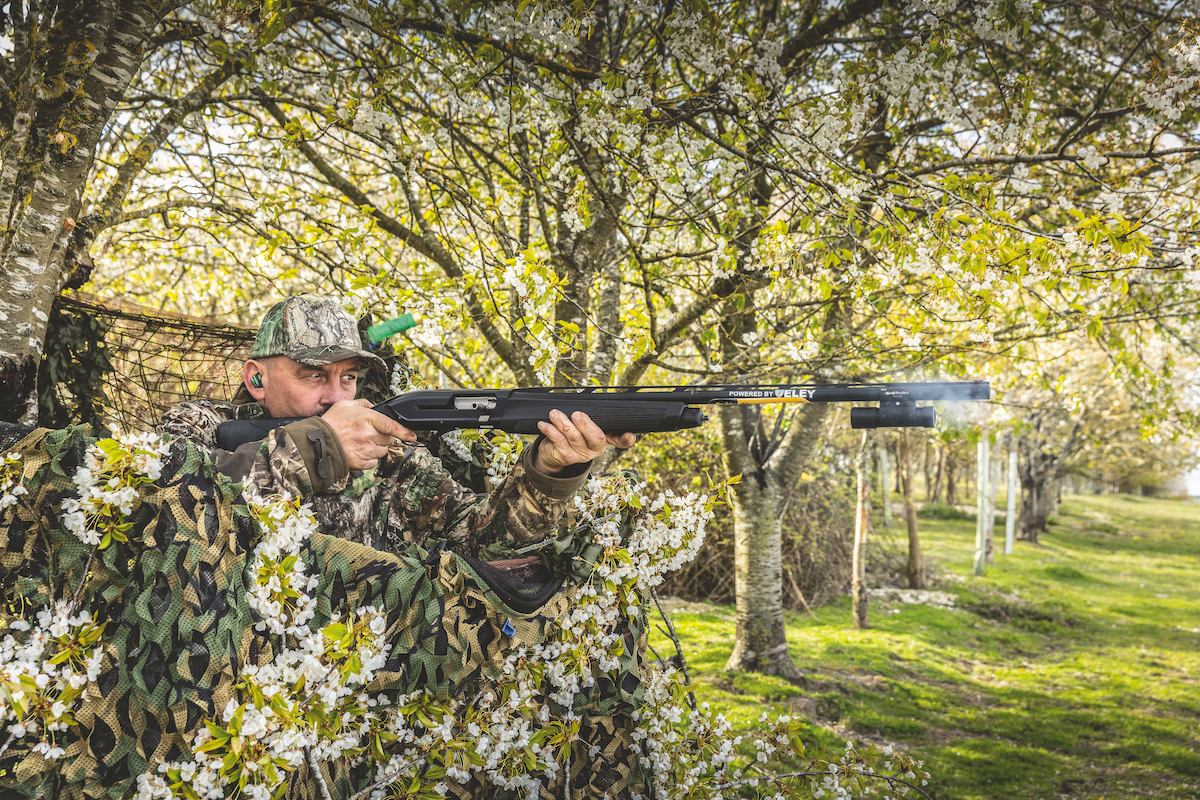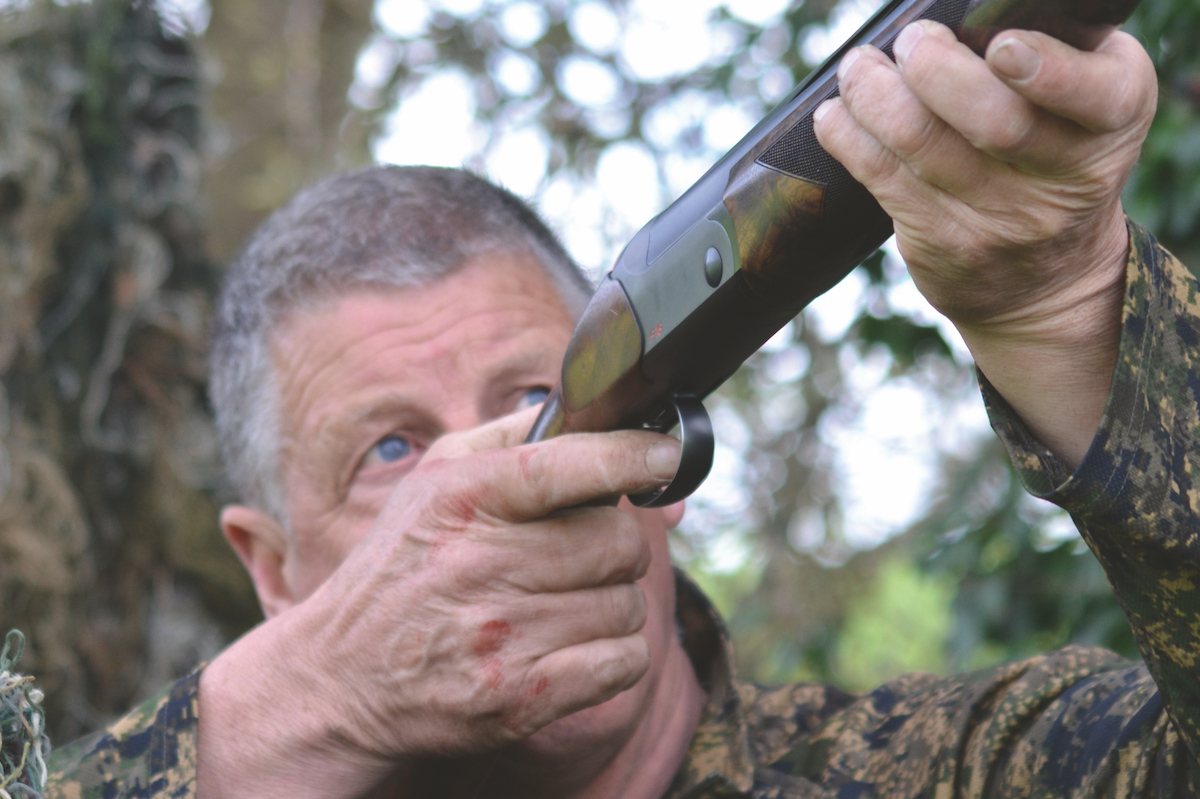Testing steel cartridges during roost shooting
Geoff Garrod finds an hour of roost shooting gives him a perfect opportunity to test out steel cartridges

For roost shooting with steel cartridges Geoff goes up a shot size
I’m still having pigeon problems on the two rape fields on the estate. The gas guns and flags aren’t working any more, so the damage continues.
At least I found where they are roosting and so decided to have a third go at thinning out the flock. One evening in the wood the week before I had managed to shoot 71. I wanted to keep the pressure on the flock before I went on holiday, so decided to shoot for an hour in the wood while also taking another opportunity to try out some steel cartridges.
I used to be an avid wildfowler until the lead ban for wildfowl came in about 20 years ago. Steel cartridges back then just didn’t do the job as well as lead. I became disillusioned and felt it was unfair to continue. Bismuth was available soon after the lead ban came into force and was at the time the best non-lead option, but it was very expensive. Since then, there have been a number of innovations coming on to the market with regard to non-lead ammunition.

The gas guns are proving to be ineffective
Embracing steel cartridges
Many game dealers have now stopped taking game and pigeons that have been shot with lead. So, like it or not, steel and other non-lead alternatives are something we are going to have to embrace sooner or later. I would encourage all shooters to try some out and you may be pleasantly surprised. I work with and use Eley products. I have tested its steel cartridges before and found them to be very good. They are not quite as effective as lead, but nonetheless they are really not that far off.
I know many of you will be aware of the choke and proof restrictions when using steel, but I’m going to mention them again as they’re very important for safety. You need to remember to use ½ choke or wider and ensure that your gun is proofed for standard steel (look for the fleur-de-lys proof mark). Check with your gun shop if in any doubt before trying steel and it will advise you. You will need full steel proofing for superior steel, if you feel you need to use it, but standard steel cartridges will do for all but the most challenging shooting.

Inspecting one of the two rape fields damaged by pigeons
I usually shoot 32g of No 6 shot for roost shooting in lead through ¾ choke. I go up a shot size for steel to compensate for the less dense nature of steel, so 32g of No 5, and I use ½ choke. I do find that steel seems to pattern a little tighter than the lead, so I don’t find the choke change a problem. The tighter pattern is probably because there is a felt wad in the lead cartridges I use, and the steel cartridges have a more conventional cup style wad to ensure that the steel doesn’t come into contact with your barrel.
I use the Eley VIP Steel cartridges and the company has listened to users regarding its biodegradable Pro Eco Wads. The vegetable-matter based eco wads melt down very quickly in the environment and will dissolve overnight in a glass of water. So Eley’s claim that they will disappear in approximately 30 days in the field seems completely plausible. One observation from users was that their light grey colour was easy to spot on the ground while they were breaking down. To counter this, Eley has added an organic brown colouring to the wads so that they are far less obvious while they decompose.

Eley VIP steel cartridges are put to the test
A small change but one that helps to keep the countryside looking tidier. Other cartridge manufacturers are working on products that will help shooters move away from lead and plastic – some are already on the market and other innovations are on the way. For the time being I am using the Eley VIP Steel cartridges.
Thoughts on steel cartridges
When I did my test it was a bright evening with a moderate wind, which was on my back and with the sun setting behind me. You could see the pigeons from a distance as they returned to the wood after filling up on the rape, flying into the wind with the sun in their eyes across a field of wheat. The conditions were perfect.
The tree cover wasn’t too dense and I placed myself under the flightline. I was there in good time, possibly a little early, but I didn’t have to wait long for the first ‘customers’. Just like the previous night I had spent in the very same spot, pigeons started to arrive in dribs and drabs to roost.








